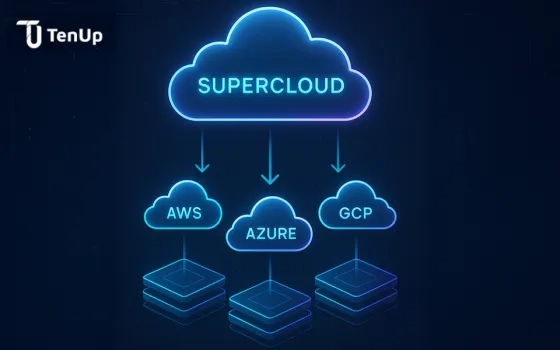Have you ever tried putting on your shoes in hurry, only to realize that you had them the other way on? In case you have, take heart from the fact that over the last 200 odd years millions have shared in the faux pas – thanks to the enterprising William Young of Philadelphia, who introduced differentiated left and right shoes way back in 1817.
Young’s invention is a vital first step (pun intended) towards the human-centric innovation journey – a transition that has increasingly been in focus in the recent years.
Innovation: A 21st Century Perspective
Organizations worldwide are focusing on five key areas: identifying and generating new business, driving profitability, expanding productivity, staying ahead of competition, and delivering enhanced customer experiences. With the rapid expansion of the data ecology and the increasing pace of digital disruptions, innovation has taken center stage as we move towards the future.
While the story of human civilization to date has been one of constant innovation, the rate at which these changes are emerging is picking up. The unification of innovation with leveraging emerging technologies, especially the vital digital groundbreakers, is driving a whole new phase of transformation, one that is more human-centric than ever before.
Even a decade ago the ‘innovation story’ used to be focused on five to six key technologies. Today, we see a rapid transformation with new ‘incremental innovations’ emerging every five to six months. True innovation is no longer merely about new technology, but rather about ‘simple’ business models that can leverage ‘cutting-edge digital technologies,’ with the ‘always on’ user in mind.
The defining feature of this innovation-centric landscape has been the rise of the ‘Integrated Digital Mindset’, with the ability to visualize and embrace a unified experience roadmap – from the silicon chip to the cloud – with the user as the center of the process. A fine example of this transformation would perhaps be the emergence of the connected, intelligent, and collaborative email ecosystem, delivering a unified experience across devices, applications, and platforms – straight from the desktop to the cloud!
As the digital innovation journey continues to strengthen, I feel that the following seven digital disruptions are likely to shape the global landscape over next five years:
- Non-traditional computation technologies: With Moore’s Law fast approaching its potential breaking point, non-traditional options like quantum computing and deep-neural networks are emerging to fill the demand for additional computational capacity. The trend seems to be evolving from traditional, to digital, to neuromorphic – underscoring a growing focus on human-centricity.
- DNA data storage: By encoding binary data in the base pairs of synthetic DNAs, this offers a revitalized approach towards data storage. It is estimated that a single gram of DNA can store all the knowledge generated by humans in a year, and is poised to radically transform how we handle, store, and retrieve data in the future.
- Distributed cloud: Distributing the cloud infrastructure in various geographical locations while ensuring centralized operations, governance, and evolution through an accessible public cloud is proving to be a major enabler for the onward innovation journey. Lower costs and continued data sovereignty are two key benefits from a distributed cloud mechanism.
- The Earth’s digital twin: A digital twin of the Earth could be the next big step – offering a real-time view of the challenges affecting the planet. By leveraging a network of low-earth-orbit satellites and a worldwide network, the Earth’s digital twin would help monitor and mitigate all potentially adverse scenarios – from the smallest brush fire, to riverbank erosion, to climate change.
- Augmented humans: Emerging technology offers the potential of augmenting human existence – from smart exoskeletons for superhuman speed and endurance to aural implants for unmatched hearing. While this does raise the specter of ethical conundrums, such augmentation has the potential to enhance the overall quality of human life.
- Technological biohacking: The digital revolution has increased the constant recording, analysis, and storage of human-generated data. While privacy concerns exist, this data stream can be leveraged via biohacking to create better medical options to significantly enhance the quality of life across the board.
- Emotional experiences: By 2024, AI-driven identification of emotions is set to influence almost half the online ads we see on a daily basis. A combination of inexpensive sensors and enhanced computing is therefore driving a scenario of mood-oriented computing and hyper-personalized experiences, targeting the underlying emotional state of human beings.
Towards Human-Centricity: Putting People at the Center
Three of the seven key trends identified earlier relate directly to human beings and their overall wellbeing. The first four, while apparently technology-led disruptions, are also aligned towards improving overall the human journey, underscoring the need for human-centricity as the core of our approach to innovation.
A key enabler in this direction are the ‘low code/no code’ applications that can provide a close fit for business requirements and can be implemented quickly and at a lower cost. By turning over development activities to the users instead of professional system developers, they facilitate an overall shift towards enhanced and streamlined productization and platformization.
Again, an enhanced focus on R&D activities has been shown to be complementary to the benefits from approaches like ‘low code/no code,’ by driving the emergence of further enablers that can streamline user experience and help in creating effective mechanisms to check potential abuse. The idea here is to allow the user to enjoy the benefits of digital technology, like a child in a Lego store, while preventing them from creating harm upon themselves.
In this hyperconnected era, it would therefore be necessary for business to reimagine their operations towards a more human-centric focus through a solutioning and consulting approach, rather than continuing to merely offer what they feel they can deliver. The shift would not only help drive the innovation journey, but would also prove vital in attracting, retaining, and growing customer attention.
Building New-Age Capabilities: Preparing for the Future
The innovation journey, however, would be severely compromised by an absence of new age capabilities to leverage the emerging opportunities. Ongoing skill development is a key enabler in this direction, with the focus on specific and targeted certifications and trainings. We would also need to move beyond the legacy mindset of targeted dissemination and leverage a digital-driven framework to deliver the maximum amount of relevant information to all users from different walks of life.
With the innovation timelines continuing to shorten, it is therefore vital that no significant gap is allowed to emerge or persist in the global knowledge chain, an ask that can be effectively addressed using the latest digital dissemination tools at our disposal.
The emergence of smart serviceable products and DIY kits is another building block in the new age capabilities paradigm. By allowing the users to modify and implement their specific requirements of a products, we are not only driving user-centricity, but also creating a framework for ensuring enhanced customer experiences across the board.
In an era where speed (or the absence of it) has emerged as a key cost determinant, reducing skill gaps, and building new-age capabilities could prove to be invaluable in ensuring continued business success. A combination of the Digital and the Physical (what we call as ‘Digical’), enabling the creation of a streamlined ecosystem, can therefore not only help drive a robust innovation journey, but also provide the circuitry of relevant capabilities for ensuring building a truly connected, human-centric future.
Digital or Death: The Road Ahead
‘Digical’ technologies have demonstrated their deep capabilities in driving the human-centric innovation journey. They have proved to be equally resolute and adaptable in facing down the challenges posed in this transformation and are poised to redefine the journey ahead.
Global businesses would therefore need to embrace digital solutions for retaining relevance in the emerging landscape, a scenario that is increasingly becoming characterized by either ‘Digital or Death.’
For after all, we wouldn’t really want the shoe on the wrong foot now – would we?
About the Author:

Nitin Jain
Global Delivery Head - Digital Products & Solutions
L&T Technology Services (LTTS)



















